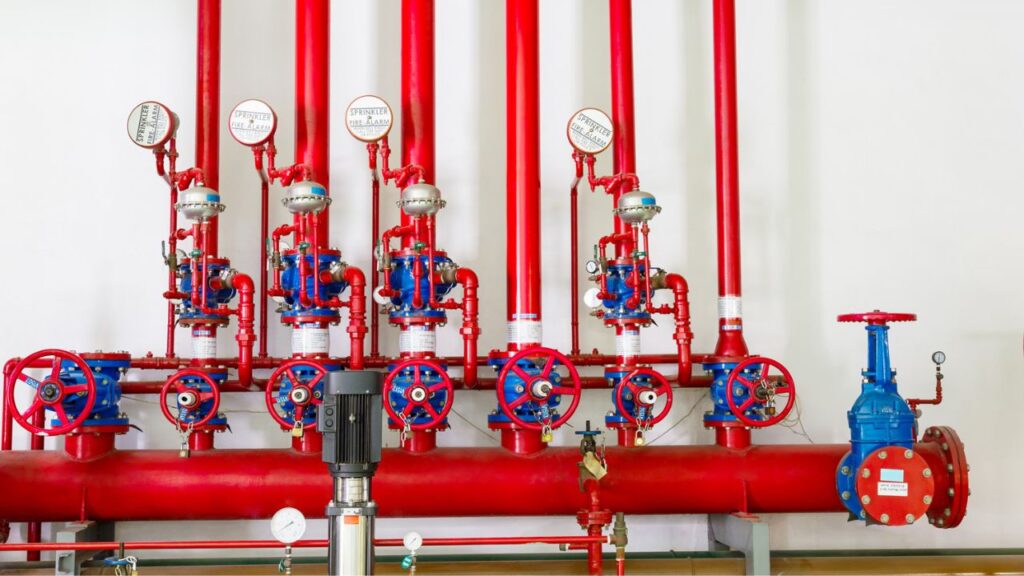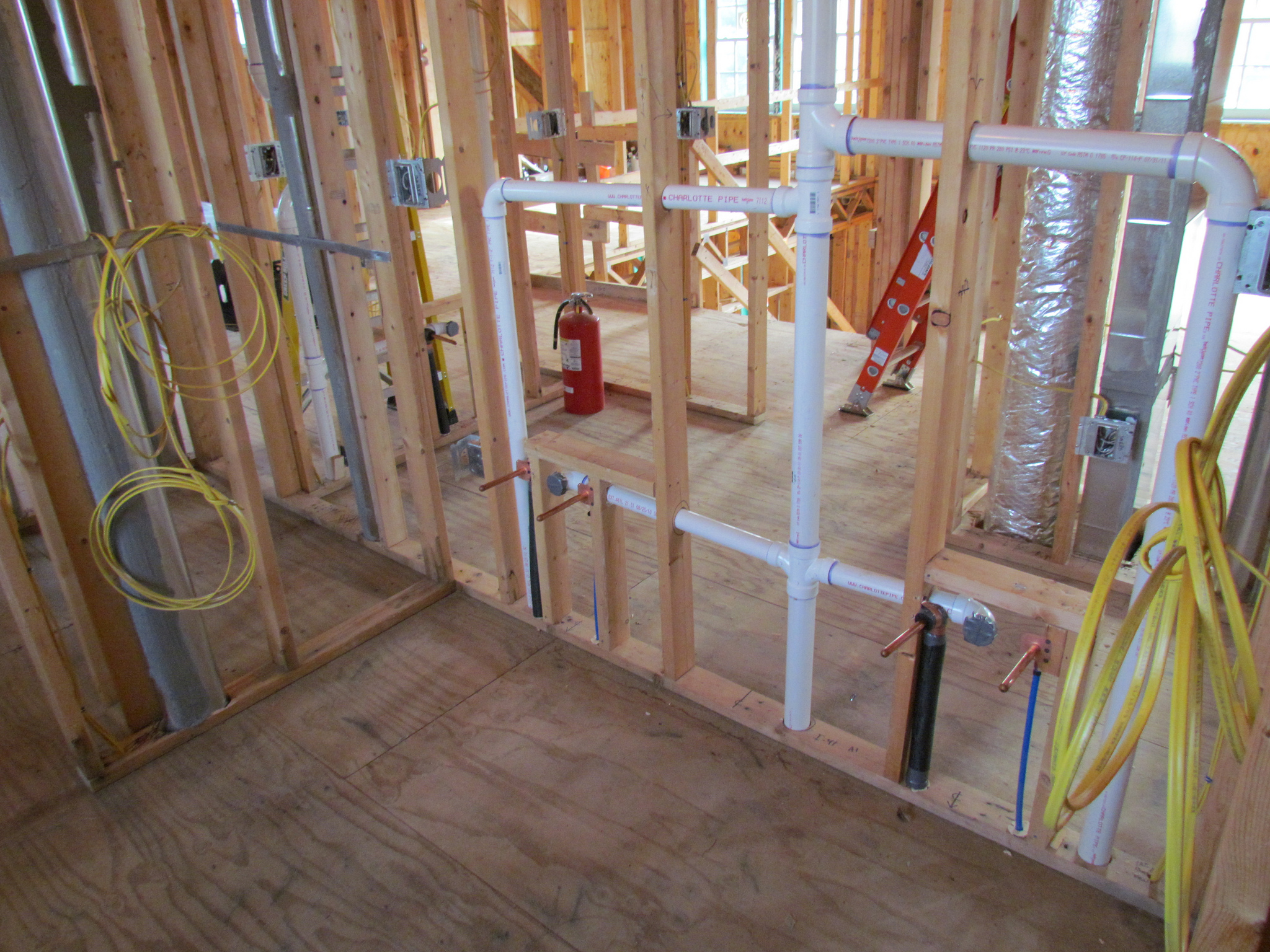What Your House's Plumbing System Works: Anatomy
What Your House's Plumbing System Works: Anatomy
Blog Article
Just how do you actually feel on the subject of The Inner Workings of Your Home's Plumbing?

Understanding how your home's plumbing system works is important for each house owner. From supplying clean water for drinking, cooking, and bathing to safely removing wastewater, a well-kept plumbing system is essential for your household's wellness and comfort. In this detailed guide, we'll discover the detailed network that composes your home's pipes and deal ideas on upkeep, upgrades, and managing usual issues.
Intro
Your home's plumbing system is more than just a network of pipelines; it's an intricate system that guarantees you have accessibility to tidy water and effective wastewater elimination. Knowing its components and how they interact can help you avoid expensive repair services and make certain whatever runs efficiently.
Standard Elements of a Pipes System
Pipelines and Tubes
At the heart of your plumbing system are the pipes and tubes that bring water throughout your home. These can be constructed from different materials such as copper, PVC, or PEX, each with its advantages in terms of sturdiness and cost-effectiveness.
Components: Sinks, Toilets, Showers, and so on.
Components like sinks, bathrooms, showers, and bathtubs are where water is used in your house. Recognizing just how these components link to the pipes system assists in identifying problems and planning upgrades.
Valves and Shut-off Points
Valves regulate the circulation of water in your pipes system. Shut-off shutoffs are critical throughout emergencies or when you need to make repair work, permitting you to separate parts of the system without interfering with water circulation to the whole home.
Supply Of Water System
Key Water Line
The major water line links your home to the community supply of water or an exclusive well. It's where water enters your home and is dispersed to different fixtures.
Water Meter and Stress Regulatory Authority
The water meter procedures your water use, while a stress regulatory authority makes sure that water streams at a safe pressure throughout your home's pipes system, stopping damage to pipes and components.
Cold Water vs. Warm water Lines
Comprehending the difference in between cold water lines, which supply water directly from the major, and hot water lines, which carry warmed water from the water heater, helps in troubleshooting and preparing for upgrades.
Drain System
Drain Pipes and Traps
Drain pipelines carry wastewater far from sinks, showers, and bathrooms to the sewer or septic tank. Traps avoid sewer gases from entering your home and additionally catch debris that can trigger obstructions.
Air flow Pipes
Ventilation pipes permit air into the drainage system, preventing suction that could reduce water drainage and cause catches to vacant. Appropriate ventilation is important for keeping the stability of your plumbing system.
Importance of Correct Water Drainage
Making sure correct water drainage stops back-ups and water damage. Regularly cleaning drains pipes and maintaining catches can avoid pricey repair work and expand the life of your plumbing system.
Water Furnace
Kinds Of Hot Water Heater
Water heaters can be tankless or typical tank-style. Tankless heating systems warm water as needed, while storage tanks save heated water for prompt use.
Exactly How Water Heaters Connect to the Plumbing System
Recognizing how hot water heater connect to both the cold water supply and warm water circulation lines helps in detecting issues like inadequate warm water or leaks.
Maintenance Tips for Water Heaters
On a regular basis flushing your hot water heater to eliminate debris, checking the temperature level settings, and evaluating for leaks can expand its life expectancy and boost energy performance.
Common Pipes Concerns
Leaks and Their Reasons
Leaks can happen due to maturing pipes, loose installations, or high water pressure. Attending to leakages quickly avoids water damages and mold and mildew growth.
Obstructions and Clogs
Clogs in drains pipes and toilets are typically brought on by flushing non-flushable things or a buildup of oil and hair. Making use of drain displays and bearing in mind what drops your drains can protect against clogs.
Indications of Pipes Problems to Look For
Low water stress, slow-moving drains pipes, foul odors, or abnormally high water bills are signs of potential pipes troubles that should be resolved immediately.
Plumbing Maintenance Tips
Routine Assessments and Checks
Schedule annual plumbing evaluations to catch problems early. Try to find indications of leakages, rust, or mineral buildup in taps and showerheads.
Do It Yourself Upkeep Tasks
Basic jobs like cleansing tap aerators, looking for commode leaks using dye tablet computers, or shielding revealed pipelines in cool climates can avoid major plumbing issues.
When to Call a Professional Plumber
Know when a pipes problem needs expert expertise. Trying intricate fixings without correct understanding can result in more damage and greater repair service costs.
Updating Your Pipes System
Factors for Upgrading
Upgrading to water-efficient components or changing old pipelines can enhance water high quality, decrease water bills, and raise the worth of your home.
Modern Pipes Technologies and Their Advantages
Check out technologies like wise leak detectors, water-saving bathrooms, and energy-efficient water heaters that can conserve money and minimize environmental effect.
Expense Factors To Consider and ROI
Determine the in advance costs versus lasting cost savings when thinking about plumbing upgrades. Numerous upgrades spend for themselves with reduced energy expenses and fewer fixings.
Ecological Effect and Conservation
Water-Saving Components and Home Appliances
Installing low-flow taps, showerheads, and bathrooms can significantly lower water usage without giving up performance.
Tips for Reducing Water Use
Simple behaviors like taking care of leaks immediately, taking much shorter showers, and running full lots of laundry and recipes can conserve water and reduced your utility costs.
Eco-Friendly Plumbing Options
Consider lasting plumbing materials like bamboo for flooring, which is durable and green, or recycled glass for kitchen counters.
Emergency Preparedness
Actions to Take Throughout a Pipes Emergency
Know where your shut-off shutoffs lie and how to switch off the water system in case of a burst pipe or significant leakage.
Significance of Having Emergency Situation Contacts Helpful
Maintain get in touch with details for local plumbings or emergency situation solutions readily available for fast feedback during a pipes situation.
DIY Emergency Situation Fixes (When Applicable).
Short-term repairs like making use of duct tape to spot a dripping pipe or placing a container under a trickling faucet can reduce damage until an expert plumber arrives.
Final thought.
Recognizing the composition of your home's plumbing system empowers you to maintain it efficiently, saving time and money on repairs. By adhering to normal upkeep routines and staying informed concerning modern-day pipes modern technologies, you can guarantee your pipes system runs successfully for several years ahead.
HOW YOUR PLUMBING SYSTEM WORKS
Which Pipes Do What?
Blue lines = fresh water supply entering the building
Red lines = hot water supply entering the building
Grey lines = pipes carrying waste away from the building and venting pipes carrying gases away from the building (through the roof)
YOUR MAIN PLUMBING SYSTEMS
There are two main plumbing systems that support your home s basic plumbing needs one that brings clean water into your home, and one that sends dirty water away from your home. Connected to the toilet, bath, shower, and other faucets in your home, these two systems keep your water flowing in the right directions.
ACCESSING FRESH WATER
Fresh and clean water is brought into your home through the main water supply line . Filtered through one pipe, this water is pressured to flow into the various fixtures in your home at any given time.
This water can be sourced from a well located on your property, a pond or river (mostly cottages), or, as in most cases, from the city s municipal water treatment centre. However, it is important to note that water that is untreated, such as the water siphoned from ponds or rivers, may not be safe to drink. Personal water supplies always need to be treated for hardness and contaminants before consumed.
MUNICIPAL WATER SUPPLIES
Improve taste and odour
Remove sediment
Eliminate hardness
Reduce chlorine
COLD WATER SUPPLY VS. HOT WATER SUPPLY
Cold water flows into your home or building through the service line, which then distributes hot or cold water to your fixtures. This line is most commonly run through a central column that runs floor to floor. Hot water runs in short and straight pipes as the longer the pipeline, the more heat that will be lost in the transfer. Having shorter pipes also allows residents to access hot water more quickly.
WASTE WATER SYSTEM
Your wastewater system is divided into two parts pipes that send wastewater away from your home and venting pipes that send sewer gas away from your home. Sewage water travels through pipes that flush the water and waste towards local sewers that are operated and managed by your city or town. Most sewer systems rely on gravity to move the wastewater to where it needs to go.
The further away from your toilet or sink, the larger wastewater pipes become. This allows for waste to be disposed of from various parts of your home or business at once without pipe blockages. The angle and flow of these pipes are also essential for keeping your waste pipes clear of build up.
https://harrisplumbing.ca/how-your-home-plumbing-system-works/

HOW YOUR PLUMBING SYSTEM WORKS
Which Pipes Do What?
YOUR MAIN PLUMBING SYSTEMS
There are two main plumbing systems that support your home s basic plumbing needs one that brings clean water into your home, and one that sends dirty water away from your home. Connected to the toilet, bath, shower, and other faucets in your home, these two systems keep your water flowing in the right directions.
ACCESSING FRESH WATER
Fresh and clean water is brought into your home through the main water supply line . Filtered through one pipe, this water is pressured to flow into the various fixtures in your home at any given time.
This water can be sourced from a well located on your property, a pond or river (mostly cottages), or, as in most cases, from the city s municipal water treatment centre. However, it is important to note that water that is untreated, such as the water siphoned from ponds or rivers, may not be safe to drink. Personal water supplies always need to be treated for hardness and contaminants before consumed.
MUNICIPAL WATER SUPPLIES
COLD WATER SUPPLY VS. HOT WATER SUPPLY
Cold water flows into your home or building through the service line, which then distributes hot or cold water to your fixtures. This line is most commonly run through a central column that runs floor to floor. Hot water runs in short and straight pipes as the longer the pipeline, the more heat that will be lost in the transfer. Having shorter pipes also allows residents to access hot water more quickly.
WASTE WATER SYSTEM
Your wastewater system is divided into two parts pipes that send wastewater away from your home and venting pipes that send sewer gas away from your home. Sewage water travels through pipes that flush the water and waste towards local sewers that are operated and managed by your city or town. Most sewer systems rely on gravity to move the wastewater to where it needs to go.
The further away from your toilet or sink, the larger wastewater pipes become. This allows for waste to be disposed of from various parts of your home or business at once without pipe blockages. The angle and flow of these pipes are also essential for keeping your waste pipes clear of build up.
https://harrisplumbing.ca/how-your-home-plumbing-system-works/
Hopefully you enjoyed our post on Plumbing Installation 101: All You Need to Know. Thank you so much for taking time to browse our article. I beg you take the opportunity to share this blog if you enjoyed reading it. Thank you for your time spent reading it.
Call Report this page